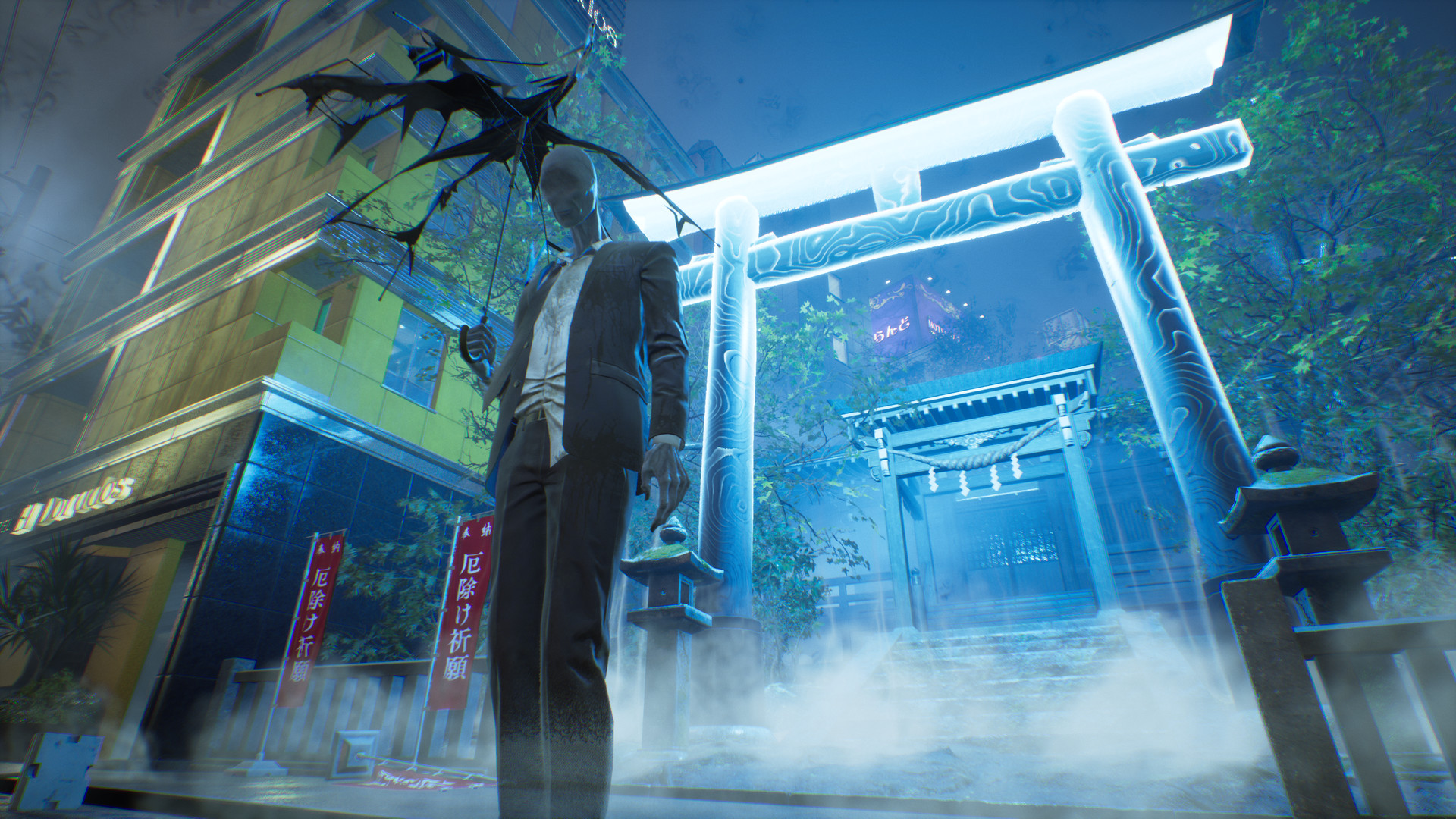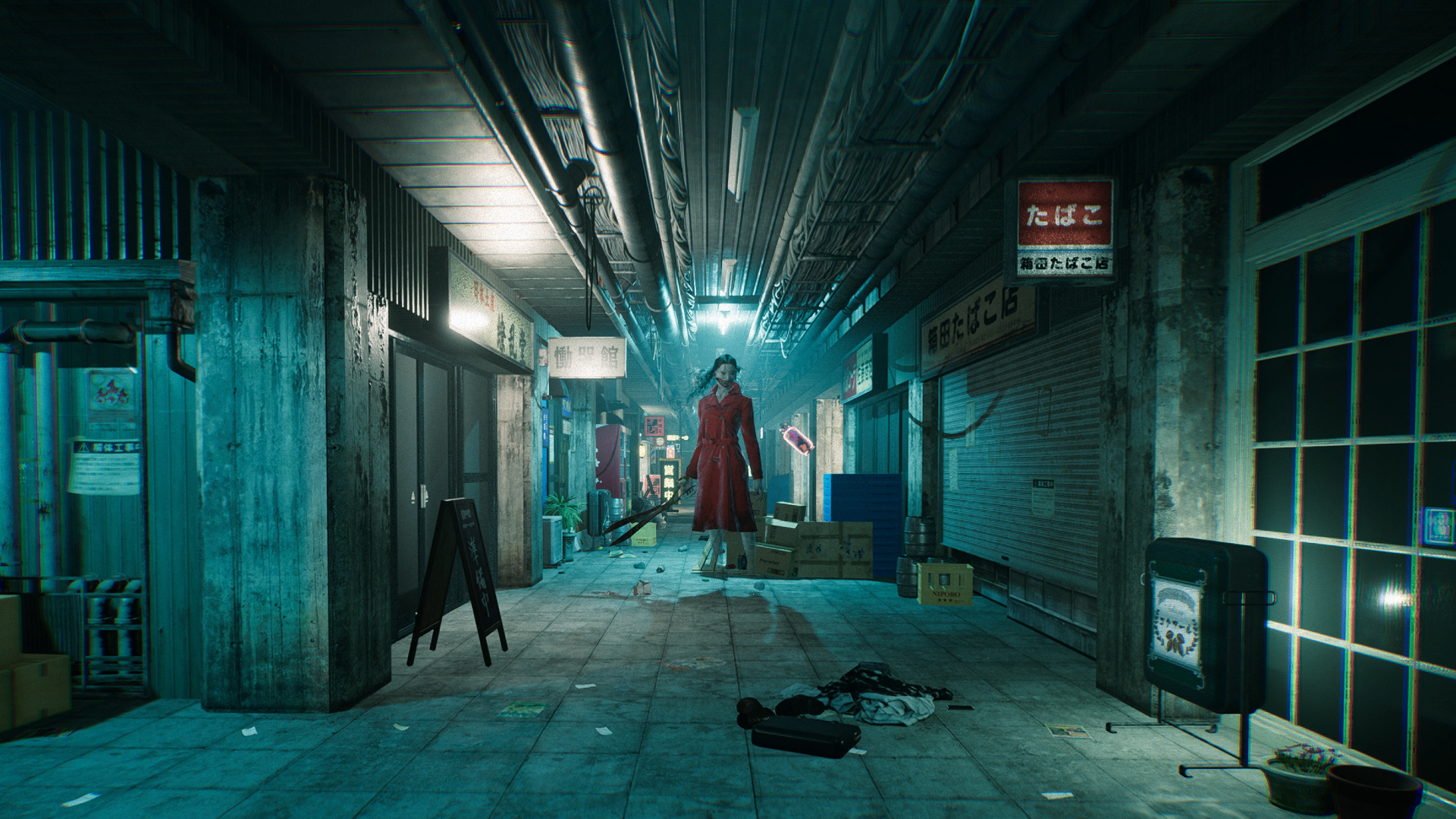Ghostwire: Tokyo has been a curious affair since it was first revealed, with the team at Tango Gameworks looking to follow up on their horror legacy with a different kind of creepy affair, set in Shibuya, Japan where everyone has disappeared apart from the spirits that still linger there.
After our behind-closed-doors preview we got to see last month, we’ve now had the chance to go hands-on with the first two chapters of the experience, and things are shaping up nicely, with what seems like plenty of spooks to keep you busy in the deserted backstreets of Shibuya.
Ghostwire: Tokyo quickly establishes a new buddy-relationship style of dynamic, between main character Akito and spirit hunter KK. At the beginning of the game, KK finds the opportunity to inhabit Akito’s body, much to the confusion and frustration of Akito. From there, it’s established that both characters have different goals; one to save his missing sister, the other to stop who is responsible for the disappearances.
To do this, Akito acquires spirit powers from KK, including the ability to cleanse corruption throughout the city, capture spirits to help free them from their bindings, and fight against the monsters that roam the streets, known as Visitors.
“Ghostwire: Tokyo sets up the story nicely and ensures that there will be many twists and turns to come…”
The opening of the game is a fairly standard affair, teaching you the various systems and what to expect in a linear pathway, including explaining the “ethereal weaving” you’ll be doing throughout; or, as gamers call it, “shooting stuff out of your hands like a badass”. It sets up the story nicely and ensures that there will be many twists and turns to come, as both characters deal with their conflicts with the spirits that now inhabit this world, and the conflict between one another.
Ghostwire: Tokyo really opens in Chapter 2, where the map kicks in and a familiar open-world style of gameplay comes into focus. For those who have played larger open world games recently like Horizon Forbidden West and Elden Ring recently, Ghostwire might feel a little bit old school by comparison. Heading to the first Torii gate, clearing out the nearby enemies and then cleansing it clears the fog that prevents you from exploring outside the available boundaries (it literally damages you if you walk in it).
Once you’ve cleansed the gate, the fog disappears, and looking at the map it begins to be littered with little icons, including points of interest and side quests – in this case, spirits who need to talk to you and get your assistance. There’s also statues to find and pray at, along with yokai (cheeky mysterious spirits) to be discovered and dealt with. While the main story missions unlock more abilities that Akito can use as you progress and are more on the serious side, these side stories helping out the various spirits are a bit more random, as you help them move on by providing them closure.

One, which we’d seen before in the preview, has you helping save a little girl from a cursed house. Another has you helping a racoon find the rest of his racoon friends hidden around the city. It reminded me of the stories that you’d encounter in Assassin’s Creed Valhalla, in the sense that you never really know what kind of task you’re going to get until you arrive at your location and talk to the spirit in question. This random nature kept me curious to discover what each mini-story would entail, with rewards that allowed me to level up Akito and acquire more useful skills.
When it comes to enemies, you can do stealth takedowns on unsuspecting foes, but when it comes to the magic attacks (that feel like a shooter, but with your hands), things can get more intense. Initially you start with wind attacks and holding down the attack button allows you to build up the attack so that it does a stronger multi-burst. If an enemy gets too close, they’ll strike at you, and a perfect block allows you to take no damage. While the first two chapters don’t have a lot of enemy variety roaming the streets, so dispatching them feels simple, without much of a challenge so far; though we know from trailers that there are some dastardly creatures still to come, lurking in the night.
Exploring a deserted Shibuya is certainly a bit of a thrill, especially as someone who has been there in real life. Being on the iconic crosswalk, completely empty, as the electronic billboards and music from shopfronts continue to blare, umbrellas and cars strewn across the streets haphazardly, strange Visitors around every corner… it doesn’t dive into pure horror at this stage, but it definitely has a creepy and spooky vibe that is certainly captivating, and looks gorgeous.

Ghostwire: Tokyo is just over a week away, and we’re looking forward to seeing what else the game has in store. While the opening chapters seem like a good intro, there’s something more sinister bubbling under the surface; if anything, the open world feels simple by comparison to recent releases, but there’s nothing wrong with a comfortable, well-made adventure that doesn’t necessarily push the envelope either. We’ll have to see just how this ghost story delivers once we’re in the later stages.
Ghostwire: Tokyo releases on PC and PS5 on March 25th.





